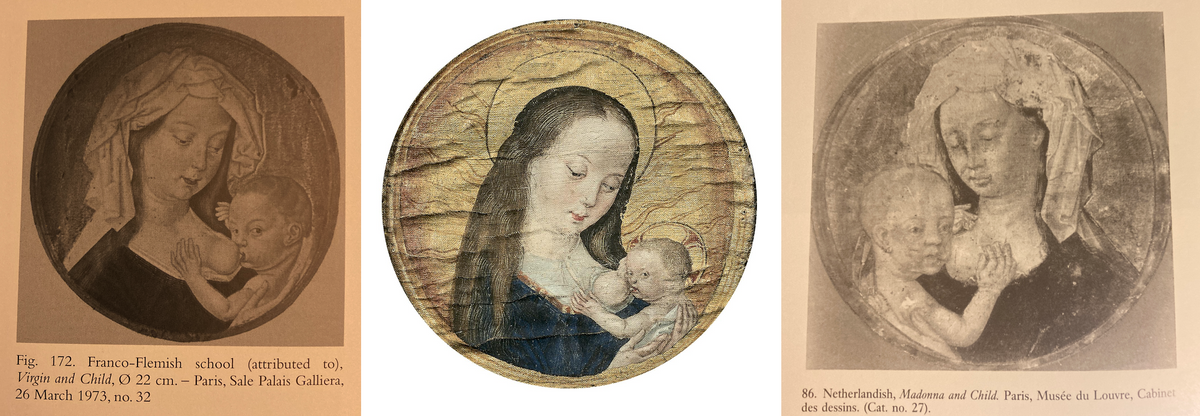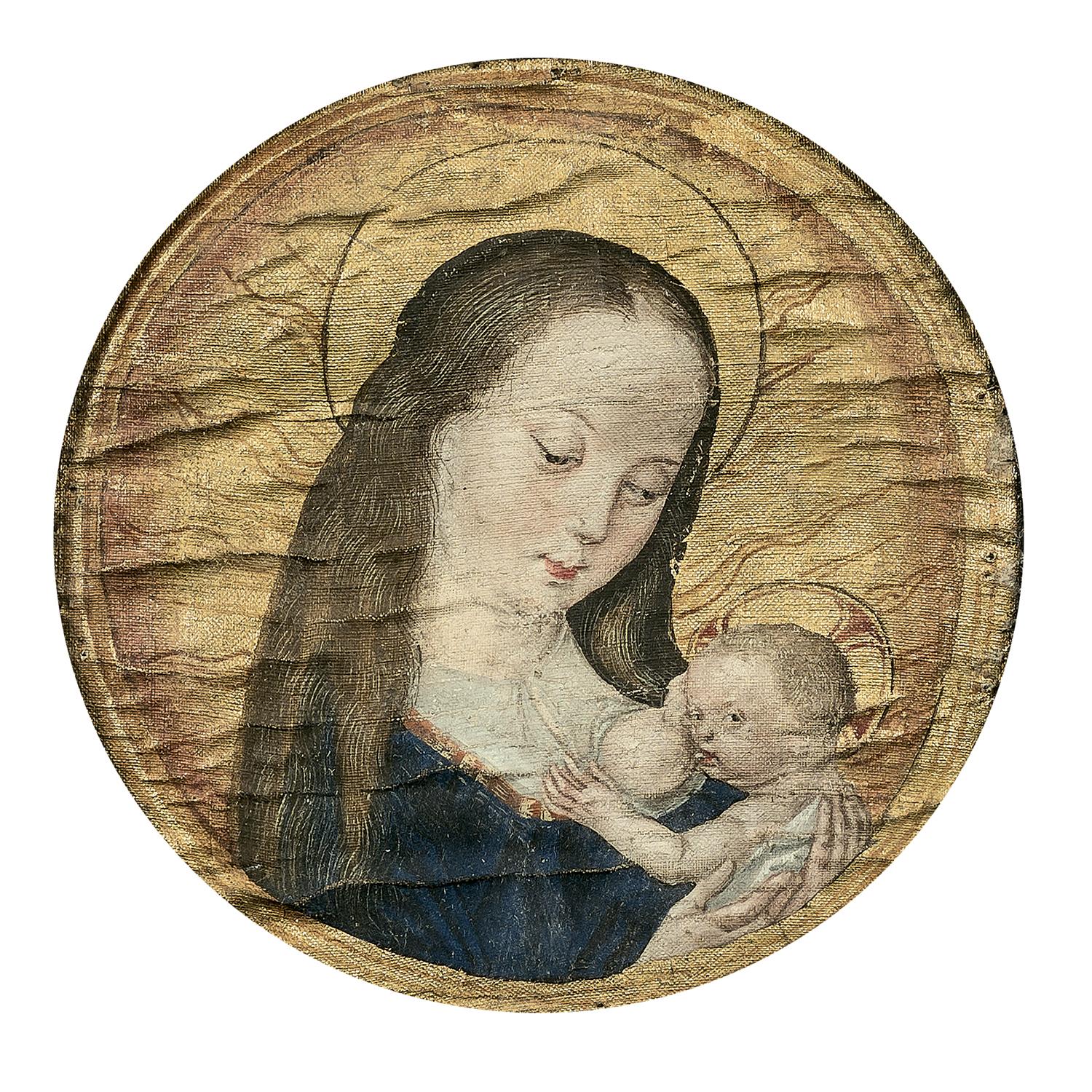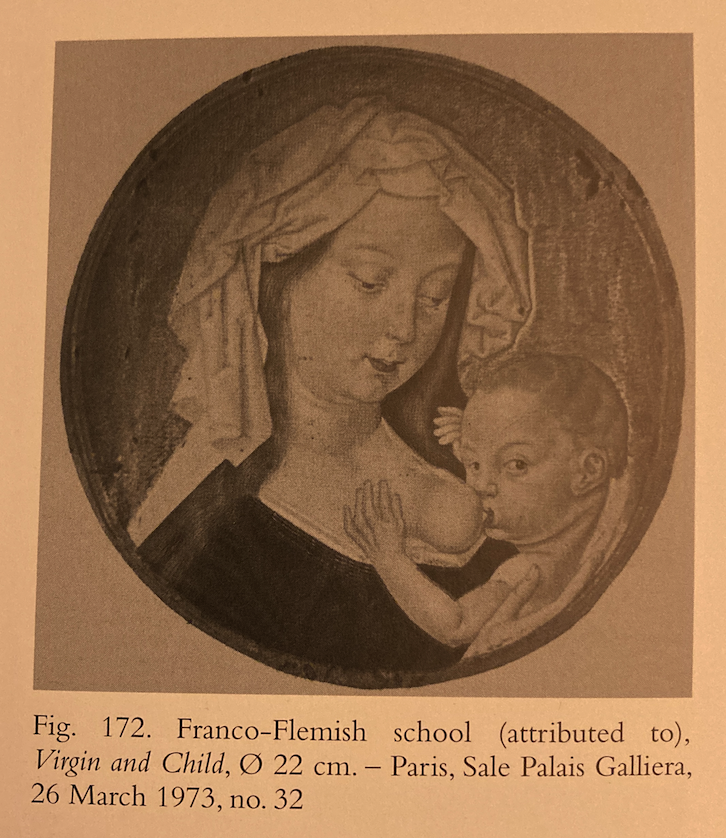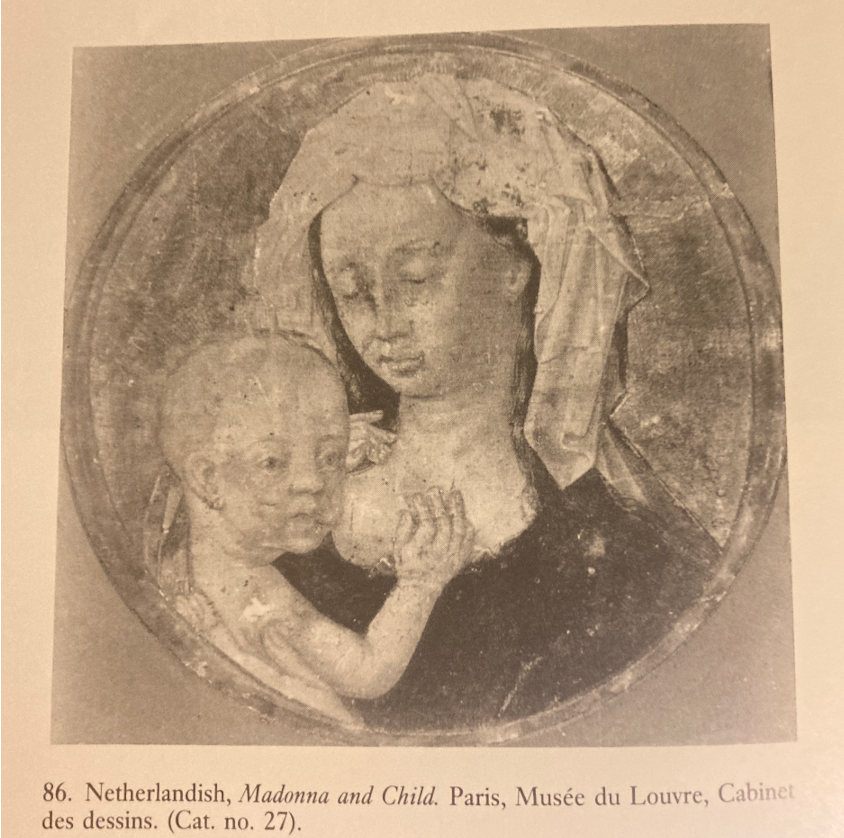Three small Tüchlein Tondos after Robert Campin

Tüchleins are tempera paintings on linen with animal glue binding, sort of like canvas paintings of the Northern Renaissance, and were quite popular in the 15th century. According to archival data from Bruges, towards the end of the 15th century 4 out of 10 artists in the city were Tüchlein painters. Today only a tiny fraction of the original output survives (the catalogue in 1989 by Diane Wolfthal counted 94), often in badly deteriorated condition.

Recently I purchased a tiny Tüchlein tondo of only 8cm diameter.
The lot essay for the 8cm Tüchlein stated:
This motif of the Virgin breastfeeding in a tondo dates back to Robert Campin, whose compositions are known from his workshop similar to our composition (Dijon, Museum of Fine Arts and Philadelphia, Philadelphia Museum of Art). They differ by the presence of a large white starched headdress which gives way here to the free hair falling on the shoulders.
Since then, I've come across a few other Tüchlein paintings of the Campin Virgin and Child composition.
While I was reading The Flemish Primitives: Volume 5, Anonymous Masters I came across a very similar Tüchlein, this one with a diameter of 22cm and current whereabouts unknown.

Although approximately 3x larger, I see a lot of stylistic similarities between the two Tüchleins, especially in the eyelids, nose and lips of the virgin. However because this is such a copied composition, it can be hard to identify by stylistic traits. I think there is a decent chance both of these were made by the same artist, but by no means for sure.
I also read The Beginnings of Netherlandish Canvas Painting: 1400–1530 by Diane Wolfthal, and came across another Tüchlein of the same motif, this one in the Louvre. I was not able to find it in the online Dessins catalogue.

Although damaged, Wolfthal attests to the quality of the painting and recalls the work of Hugo van der Goes (who was known to paint on linen) in certain aspects. To my eye, this Tüchlein appears less directly related to the other two stylistically. It may also be slightly earlier than the other two.
Tüchlein painting is almost a lost art, in large part due to the fragile nature of the medium. The corpus of remaining works is extremely limited, and it is particularly difficult to make comparisons among Anonymous masters who have not been grouped with a provisional name. Because these three Tüchleins represent the exact same composition, it is interesting to try to make stylistic comparisons based on the differences in execution. In the future, I may try to view the Louvre tondo and obtain better photographs, if I am able to find the inventory number.
